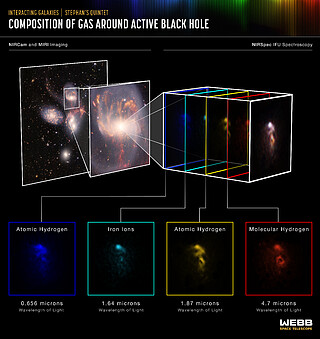Spectrograph and Spectroscopy
Spectroscopy is a fundamental tool that astronomers use to study the Universe. Spectrographs are instruments that are used to conduct spectroscopy. They provide scientists with the data they need to analyse the materials that make up stars, nebulae, galaxies and the atmospheres of planets.
Any object that absorbs or emits light can be studied with a spectrograph to determine characteristics such as its temperature, density, chemical composition, and velocity. Once the light enters the spectrograph it is spread out by a dispersive optical element into its different components (or wavelengths) in order to be studied. This optical element acts much like rain droplets that disperse the light to form a rainbow. This dispersed light is then focused onto a detector and it is seen as a spectrum. The spectrum’s pattern can be analysed by astronomers to decipher what atoms and molecules are present in the source. This helps them to understand the various physical and chemical characteristics of the source. In this way, Webb’s images tell us what something looks like, while the spectral data tell us what it is and what it’s made of.
All four of Webb's scientific instruments are equipped for spectroscopy. NIRSpec is the primary spectrograph and operates at near-infrared wavelengths. NIRISS is a slitless spectrograph, an innovative type of instrument where the light does not enter through a narrow slit. Both of these complement NIRCam, Webb's main near-infrared camera. MIRI, the Mid-InfraRed Instrument, is both an astronomical camera and a spectrograph.
Many of Webb's key science goals in infrared astronomy are only possible by using spectroscopy. Webb examines the atmospheres of exoplanets, how elements were formed in early galaxies, the composition of protostars and new planets, and the appearance of the first stars in the early Universe. One of Webb's first images featured the most detailed spectrum of an exoplanet ever seen at the time, and soon afterwards astronomers reported the first confirmation of carbon dioxide in the atmosphere of an exoplanet with Webb.
Learn more about Webb’s use of spectroscopy here. View the collection of Webb spectra and images featuring spectroscopic data here.




